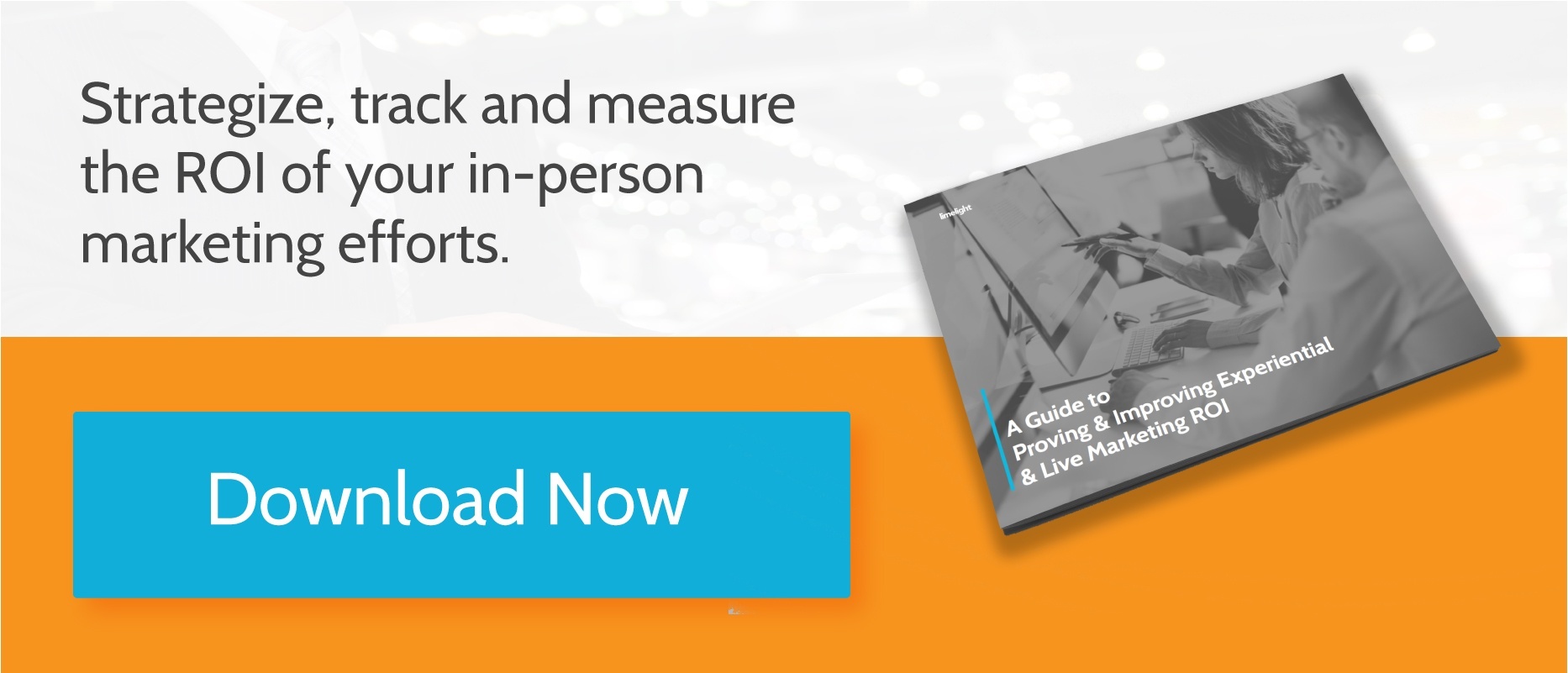Why Impressions Won't Cut It Anymore: The Importance of Active Data Capture for Live Marketing
Conversions, click-throughs, customer surveys -- marketers have more passive and active data at their fingertips than at any point in history. In fact, 90 percent of all the data in the world has been created in the last two years. (That works out around 2.5 quintillion bytes every single day.) By the time you finish this article, computer systems will have generated even more data and provided marketers with new opportunities.
Not all data is the same, mind. Yes, all information is useful when you create consumer profiles and measure experiential campaigns, but only some types of data will let you outsmart your competitors and really connect with customers. Oh, and here's a tip: website impressions don't really cut it anymore. Read on to find out why active data is so important in the world of experiential in 2018.
What's the Difference Between Passive Data and Active Data?
Passive data is all the data you collect that requires little or no involvement from consumers. This type of data collection lets you gather statistical information about topics for later research and analysis, but it rarely provides any context. You can't, for example, collect a customers' reactions or opinions about products, services and events.
Some examples of passive data include:
- Website impressions
- Total sales
- Clickthrough rates
- Dwell times
Active data collects consumers' preferences, thoughts and opinions about products, services and events. It provides more detail; for example, you can discover what customers think about a topic. Use active data collection to ask consumers questions and collect their answers.
Some examples of active data include:
- Surveys and questionnaires
- Feedback forms
- Social media research
Active data takes longer to accumulate than passive data. Customers will have to answer several questions about a topic on a paper form or via a mobile app, for example. However, you can provide consumers with something in return for their data, such as a free sample or promotional item.
"Passive data monitoring allows you to monitor the what, but not the why," says Survey Sampling International, a global provider of data solutions.
"For example, passive data relay via a GPS technology would allow you to see how long someone looked at a specific advertisement or a web monitoring program would reveal which button they clicked. But, it doesn't tell you why they lingered by the ad or what prompted them to push the button."
Active data gives you more in-depth insights into customer information, and you can use this information to facilitate future experiential campaigns. If you still just rely on passive data, upgrade your data capture strategy now -- before it's too late.
The Importance of Quantifying Your Data
Increasingly, executives ask event marketing managers about the data they collect. What value does it provide? How does it impact a company's bottom line? Some executives are sick of the same old key performance indicators -- website impressions, for example -- because the information these metrics generate is vague and often useless.
This is why active data is so important. Quantifying your experiential campaigns often provides you with a greater return on your investment than qualifying your campaigns. That's because you can identify strengths and weaknesses in your current marketing strategies, engage with customers and find solutions to problems.
Plus, asking customers about their opinions at an event is no big deal. Eighty-three percent of all consumers have completed at least one survey during the last 12 months, with an average of three to four completed in the same period.
"Improving the customer experience should be the primary reason you gather customer feedback," says Client Heartbeat. "The process of winning new business and retaining existing customers is getting harder and harder. Offering an amazing experience that keeps your customers coming back and referring their friends to you is the best way you can stand out from your competition."
Why You Should Combine Active Data and Passive Data
You can have too much of a good thing, of course. Active data will provide you with real value and insight in your marketing campaigns, but it requires more input from consumers.
You can't just get customers to fill out surveys at an event -- that's no fun. There has to be a happy medium. Combining active data with passive data will generate a 360-degree overview of your customers.
This way, you can measure the success of product, services and events with big data -- find out how many people visited your website or purchased a product, for example -- and discover how customers perceive a brand at the same time.
Having a multi-channel or integrated marketing campaign, where you blend active data collection with passive data collection, works best. Ninety-five percent of all marketers say they know how important multi-channel marketing is for targeting, while 72 percent of consumers prefer connecting with brands through multi-channel.
Active data and passive data couldn't be any more different. Both come with loads of benefits, but if you really want to turbocharge your experiential campaigns, combine the two. Having an integrated marketing strategy that covers all bases will not only give you the data you need but help you connect with customers on a much deeper level.

